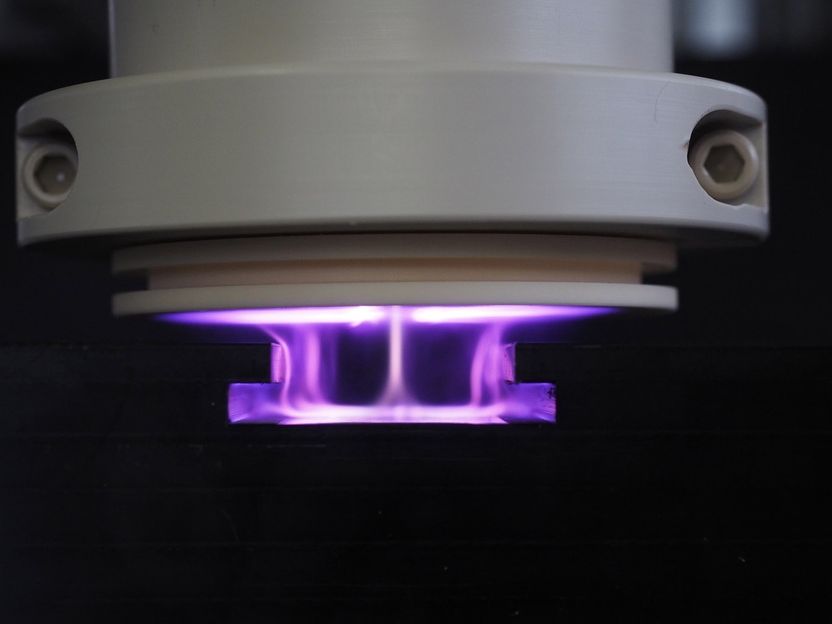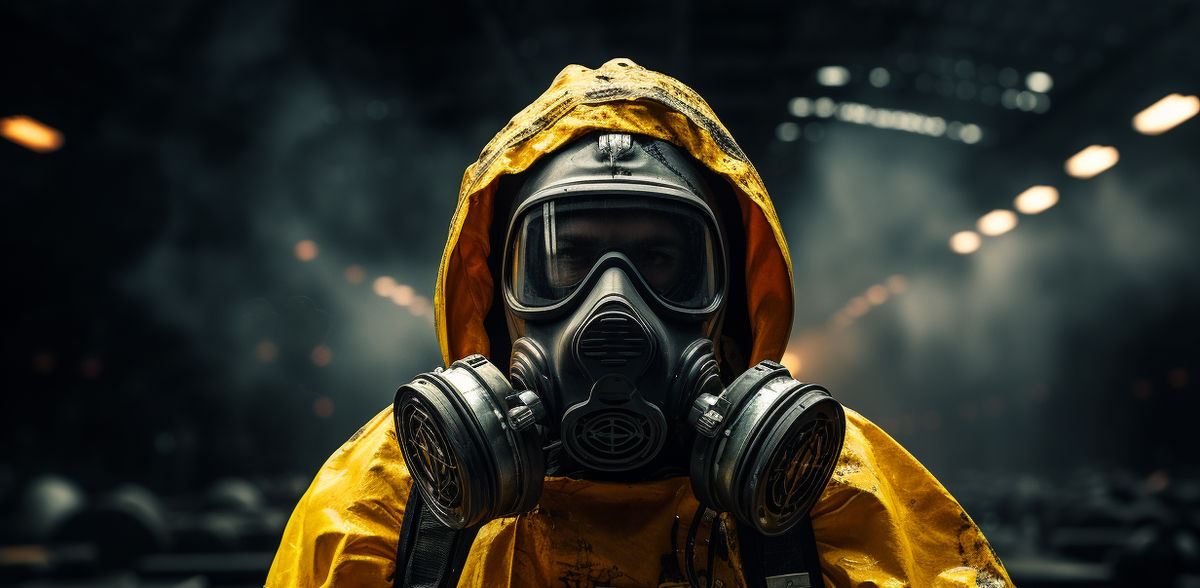More comfortable and safer: new concept for chemical protective suits
Chemical protective suits (CSA) protect against contact with chemical, biological or radioactive substances. The suits easily weigh in at 25 kilograms. New materials and an improved design make them more comfortable to wear. Integrated sensors monitor vital functions.

DITF
In the event of hazards from chemical, biological or radioactive substances, chemical protective suits (CSA) protect people from physical contact. CSAs consist of breathing apparatus, head protection, carrying frames and the suit itself. This adds up to a weight of around 25 kg. The construction of a multi-coated fabric makes the CSA stiff and provides for considerable restrictions in freedom of movement. As a result, the emergency forces are exposed to significant physical stress. For this reason, the total deployment time when using a CSA is limited to 30 minutes.
In a joint project with various companies, institutes and professional fire departments, work is currently underway to completely redesign both the textile material composite and the hard components and connecting elements between the two. The goal is a so-called "AgiCSA", which offers significantly more comfort for the emergency forces due to its lighter and more flexible construction. The DITF subproject focuses on the development of a more individually adaptable, body-hugging suit on the one hand, and on the integration of sensors that serve the online monitoring of important body functions of the emergency personnel on the other.
At the beginning of the project, the DITF received support from the Esslingen Fire Department. They provided a complete CSA that is used as standard today. This could be tested at the DITF for its wearing properties. The researchers in Denkendorf are investigating where there is a need for optimization to improve ergonomic wearing comfort.
The aim is to construct a chemical- and gas-tight suit that fits relatively closely to the body. It quickly became clear that it was necessary to move away from the previous concept of using woven fabrics as the basic textile material and think in terms of elastic knitted fabrics. In implementing this idea, the researchers were helped by recent developments in the field of knitted fabric technology in the form of spacer fabrics. By using spacer textiles, many of the requirements placed on the base substrate can be met very well.
Spacer textiles have a voluminous, elastic structure. From a wide range of usable fiber types and three-dimensional design features, a 3 mm thick spacer textile made of a polyester pile yarn and a flame-retardant fiber blend of aramid and viscose was selected for the new CSA. This textile is coated on both sides with fluorinated or butyl rubber. This gives the textile a barrier function that prevents the penetration of toxic liquids and gases. The coating is applied to the finished suit by a newly developed spraying process. The advantage of this process over the conventional coating process is that the desired elasticity of the suit is retained.
Another innovation is the integration of a diagonal zipper. This makes it easier to put on and take off the suit. Whereas this was previously only possible with the help of another person, the new suit can in principle be put on by the emergency responder alone. The new design is modeled on modern dry suits with diagonal, gas-tight zippers.
The new AgiSCA also features integrated sensors that allow the transmission and monitoring of the vital and environmental data of the emergency worker as well as their location via GPS data. These additional functions significantly enhance operational safety.
For the hard components, i.e. the helmet and the backpack for the compressed air supply, lightweight carbon fiber-reinforced composite materials are used.
The first demonstrators are available and are available to the project partners for testing purposes. The combination of current textile technology, lightweight construction concepts and IT integration in textiles has led to a comprehensive improvement of a high-tech product in this project.
Most read news
Organizations
Other news from the department research and development

Get the chemical industry in your inbox
By submitting this form you agree that LUMITOS AG will send you the newsletter(s) selected above by email. Your data will not be passed on to third parties. Your data will be stored and processed in accordance with our data protection regulations. LUMITOS may contact you by email for the purpose of advertising or market and opinion surveys. You can revoke your consent at any time without giving reasons to LUMITOS AG, Ernst-Augustin-Str. 2, 12489 Berlin, Germany or by e-mail at revoke@lumitos.com with effect for the future. In addition, each email contains a link to unsubscribe from the corresponding newsletter.
Most read news
More news from our other portals
Last viewed contents

Electronics integrated in plastic becomes more sustainable - Recyclability by Design

Cold plasma: Get started with the Disc Jet
Queen's researchers develop technology to reduce cost of purifying natural gas
EMSA, Cefic and Cedre sign agreement for co-operation in the field of marine pollution involving chemicals
Gabriel Performance Products Announces the Acquisition of Ranbar Electrical Materials
LANXESS underpins BRIC strategy with two acquisitions in Asia - LANXESS to acquire chemical businesses of Indian company Gwalior Chemical Industries Ltd for EUR 82.4 million
List_of_drugs:_Cb-Ce
UCB Receives EMEA Positive Opinion and FDA Approvable Letter for Keppra® (levetiracetam) Intravenous Administration
Mechanical Completion of New POM Manufacturing Plant in China
Levels of pyrrolizidine alkaloids in herbal teas and teas are too high - The first non-representative results of a BfR research project show that efforts are required to minimise levels




























































